5124 NE 34th Ave. - Portland, OR 97211-7452 - http://www.coasttrails.org - (503) 335-3876
NEWS RELEASE
NEWS RELEASE
FOR IMMEDIATE RELEASE: Thursday, July 31st, 2003
Media Contacts: Al LePage, Executive Director, National Coast
Trail Association, (503) 335-3876
Chris Hathaway, Lower Columbia River Estuary Partnership, (503) 226-1565
ext. 228
"Bonneville To The Pacific!" Paddle Event Shares Vision of Lower Columbia River Water Trail
Paddlers travel a proposed recreational water trail stretching some 146 miles along the Columbia from Bonneville Dam to the Pacific to share the vision of the trail and their stories of its natural beauty, rich history and culture.
Al LePage, Executive Director of the National Coast Trail Association (NCTA), will travel some 140 miles by kayak over the first two weeks of August to promote public awareness about the proposed Lower Columbia River Water Trail. Paddlers joining him along certain strectches of the river will include Congressman Brian Baird, whose office has been involved in the effort; Robin Cody, author of Voyage of a Summer Sun, telling the story of his canoe trip from the headwaters of the Columbia to the Pacific; Rex Derr, Director of Washington State Parks; and Reed Waite, executive director of the Washington Water Trails Association, another group working for the trail. Four entertaining and informational public presentations will be given by LePage and those joining him at specific points during the paddle event; REI Janzten Beach in Portland, OR at 7 PM on Tuesday, August 5th; Lower Columbia College in Longview, WA at 6:30 PM on Thursday, August 7th; The River Street Building in Cathlamet, WA at 6:30 PM on Monday, August 11th; and the Clatsop County Historical Society's Heritage Museum in Astoria at 6:30 PM on Thursday, August 14th. The event will officially end when LePage lands his kayak at about 3 PM on Friday, August 15th at the proposed public paddle landing and launch site being developed by Fort Clatsop National Memorial in Astoria, Oregon. Although guided paddling is not available to the public as part of the paddle event, the public can arrange tours along various sections of the trail through various local area businesses. Examples include Alder Creek Kayak & Canoe in Portland, OR; Scappoose Bay Kayaking in St. Helens, OR; and Skamokawa Center in Skamokawa, WA.
"The lower Columbia River has been a water trail for hundreds -- if not thousands -- of years," notes Al LePage, Executive Director of the National Coast Trail Association. "The Chinook Indian Tribe, Lewis & Clark, Hudson's Bay Company, Oregon Trail pioneers, and others have plyed its waters in the past. Today's barges, cargo ships, and boaters continue the tradition. The vision for a recreational water trail has been around a long time, and given the recent and exceptional growth of paddle sports and the upcoming bicentennial of the Lewis & Clark Expedition, it's an idea whose time has truly arrived. It's time to share the vision with everyone. And, one great way to do just that is from people actually paddling it!"
The Lower Columbia River Water Trail is envisioned as a 146-mile water trail from Bonneville Dam to the Pacific Ocean that people in non-motorized boats can safely travel for day or overnight explorations. The water trail links together seven specific sections or "reaches" along the lower Columbia, each approximately 20 miles long -- about the distance of a typical two-day paddle. Beginning at Bonneville Dam and going downriver these "reaches" are, (1) The Gorge, (2) Portland/Vancouver, (3) Sauvie Island, (4) Kalama/St. Helens, (5) Longview/Rainier, (6) The Refuges, and (7) The Mouth. The journey along its length is spectacular and fascinating, a rich melange of gorgeous landscapes, historical sites, and working ports of call. This free-flowing section of the Columbia River flows through the magnificient Columbia Gorge National Scenic Area with its volcanic cliffs and waterfalls. It also travels along many wildlife refuges; waterfowl abounds at Sauvie Island and Ridgefield, there's Columbian white-tailed deer at the Julia Butler Hanson refuge, and one may enjoy the multitude of marshes and islands of the Lewis & Clark National Wildlife Refuge. Cultural and educational attractions along the river corridor include historical and maritime museums, abandoned riverfront towns, Forts Vancouver and Clatsop, and places where Native American's lived and worked in the past.
"Safety is one of the most important things to consider when paddling any section of this water trail," notes LePage. "You shouldn't just throw a kayak or canoe into the Columbia and think you're ready. The Columbia's not a lazy river like the Mississippi; even in summer its waters are cold, fed by snow melting from atop Cascade mountains. Strong winds that arise before noon, loved by windsurfers, can slow paddlers to a halt. Tidal influences that strectch all the way from the Pacific to Beacon Rock itself can either greatly help or hinder your progress. You really do need to be prepared in terms of the necessary knowledge, skill-level, and proper equipment to do the specific stretch of river you'll be paddling. This year I revised my CPR/First Aid certification and upgraded my skill-level to' intermediate' with a kayak course that included paddle techniques, such as bracing, and learned how to do self and assisted rescues for when I will inevitably flip upsidedown. A lifejacket is an obvious piece of safety equipment, but I also invested in everything from a VHF radio, to speak with approaching ship captains and send distress signals, to a leash to attach my paddle to the kayak if I flip, so the paddle isn't floating downstream without me and my kayak."
"Respect is another important thing to carry with you at all times," LePage also emphasizes. "A lot of the shoreline along the water trail belongs either to individuals or the public agencies managing their lands for the benefit of wildlife. Those using the trail need to respect these areas of landowners and agencies alike by only using places where resting, camping, and access are allowed. This simply means being prepared to know where these places exist and obeying the regulations that protect wildlife and their habitat."
The Lower Columbia River Estuary Partnership (Estuary Partnership) has been coordinating the effort since August 2001 under the direction of Chris Hathaway, Director of Watershed programs for the partnership. The work is being done through the Lower Columbia River Water Trail Committee, with technical assistance provided through the National Park Service's Rivers, Trails, and Conservation Assistance Program. The Committee was formed in September 2001 as a bi-state coalition of people with a diversity of interests and connections to the river. It includes representatives from state and federal agencies, local governments, environmental groups, paddling organizations and businesses, historical associations, economic development councils, trail associations, as well as interested citizens and others. The group works as an ad-hoc committee of the Estuary Partnership, a non-profit bi-state organization funded through the US Environmental Protection Agency and the states of Oregon and Washington. The committee's work has focused on planning, mapping and inventory of facilities for lauching, landing, resting, and camping, identifying local partners and gaining support for the trail concept, public outreach events, and developing a quality brochure.
"The success of the Lower Columbia River Water Trail will depend on a strong partnership with many affiliates," adds Chris Hathaway, Director of Watershed programs for the Lower Columbia River Estuary Partnership, "national park units and wildlife refuges; state, county, and city parks; local businesses, and the nearly thirty communities located along the shorelines of the mighty lower Columbia river. This special paddle event continues outreach to share the vision and listen to the public's ideas, most recently this spring with seven open houses in communities streching all the way from North Bonneville to the Pacific."
PHOTOS FOR NEWSPAPERS ARE DIRECTLY BELOW THIS PRESS RELEASE
#####
The National Coast Trail Association (NCTA) is a non-profit organization working to "Keep The Coast For Everyone" through recreational trails, public access, and the preservation of historic and natural environments. It is also a member of the Lower Columbia River Water Trail Committee. Visit www.coasttrails.org for organizational and special event details.
The Lower Columbia River Estuary Partnership is a non-profit bi-state
organization working in Washington and Oregon to protect and restore the
nationally significant lower Columbia River esturay with on-the-ground
improvements, education and information programs. It coordinates
the efforts of the Lower Columbia River Water Trail Committee. Visit
www.lcrep.org for further information.
--------------------------------------------------------------------------------
The following five photos may be used by the newspaper print media
and cropped and color-balanced as necessary.
They are high resolution photo images of 300 dpi suitable for print
quality.
Please credit the National Coast Trail Association.
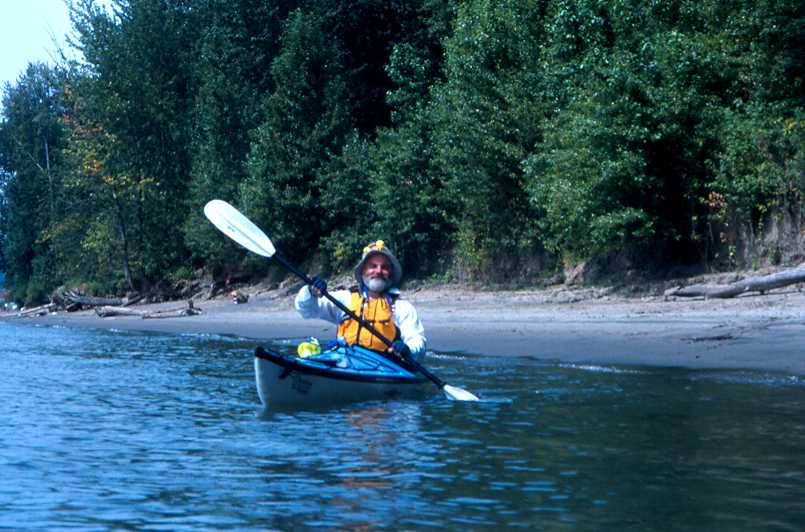
Al LePage paddles a stretch of the Lower Columbia River Water Trail.
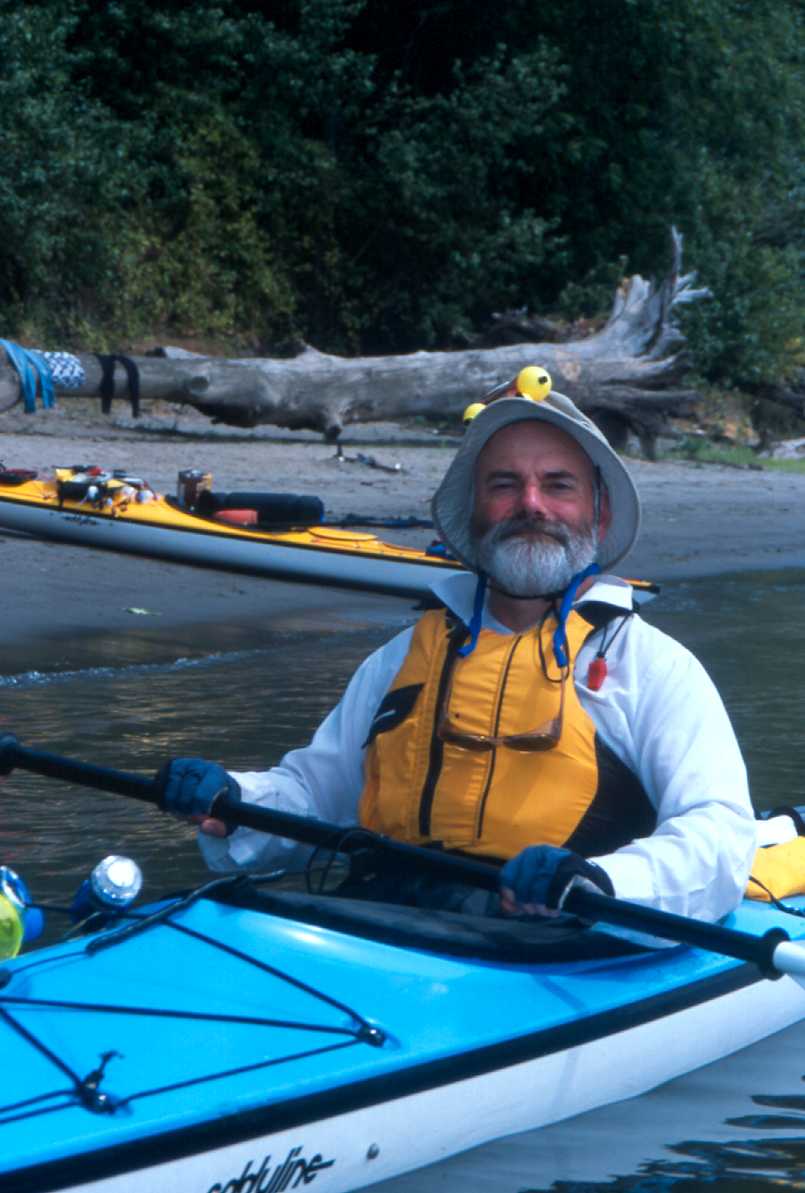
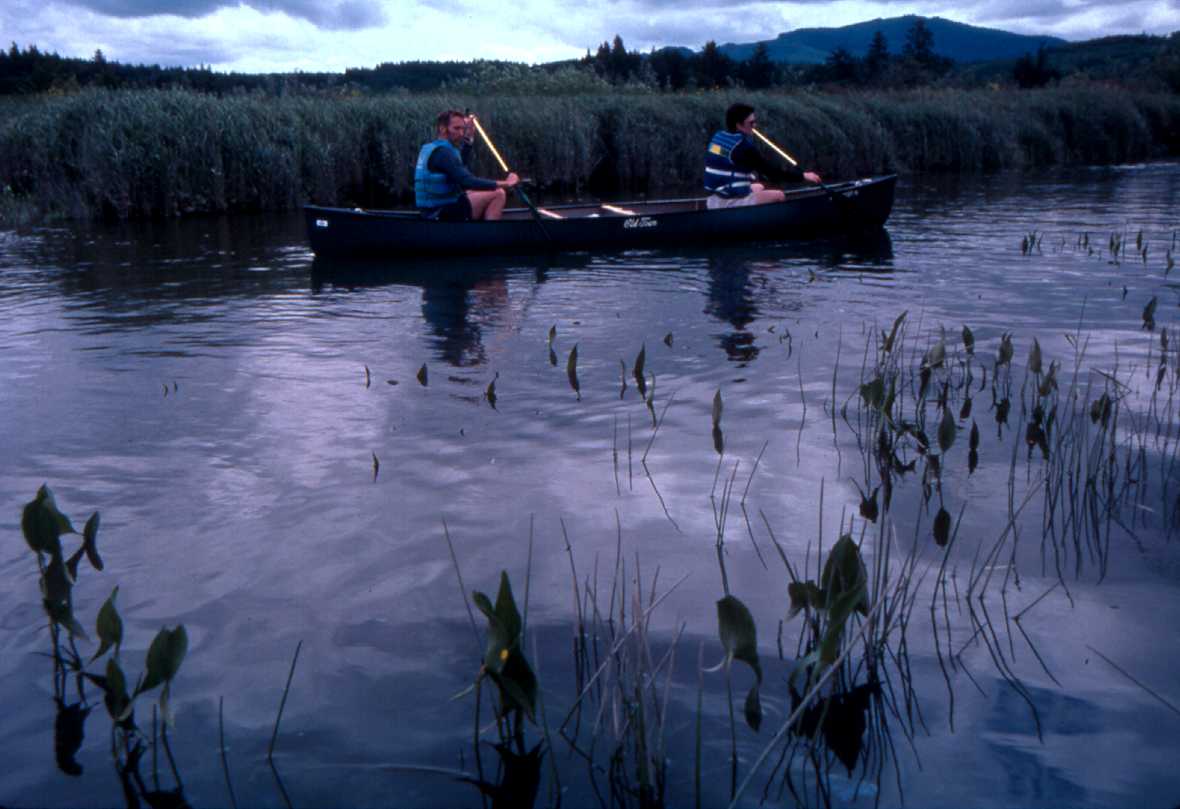
Paddlers enjoy a stretch of the Lower Columbia River Water Trail
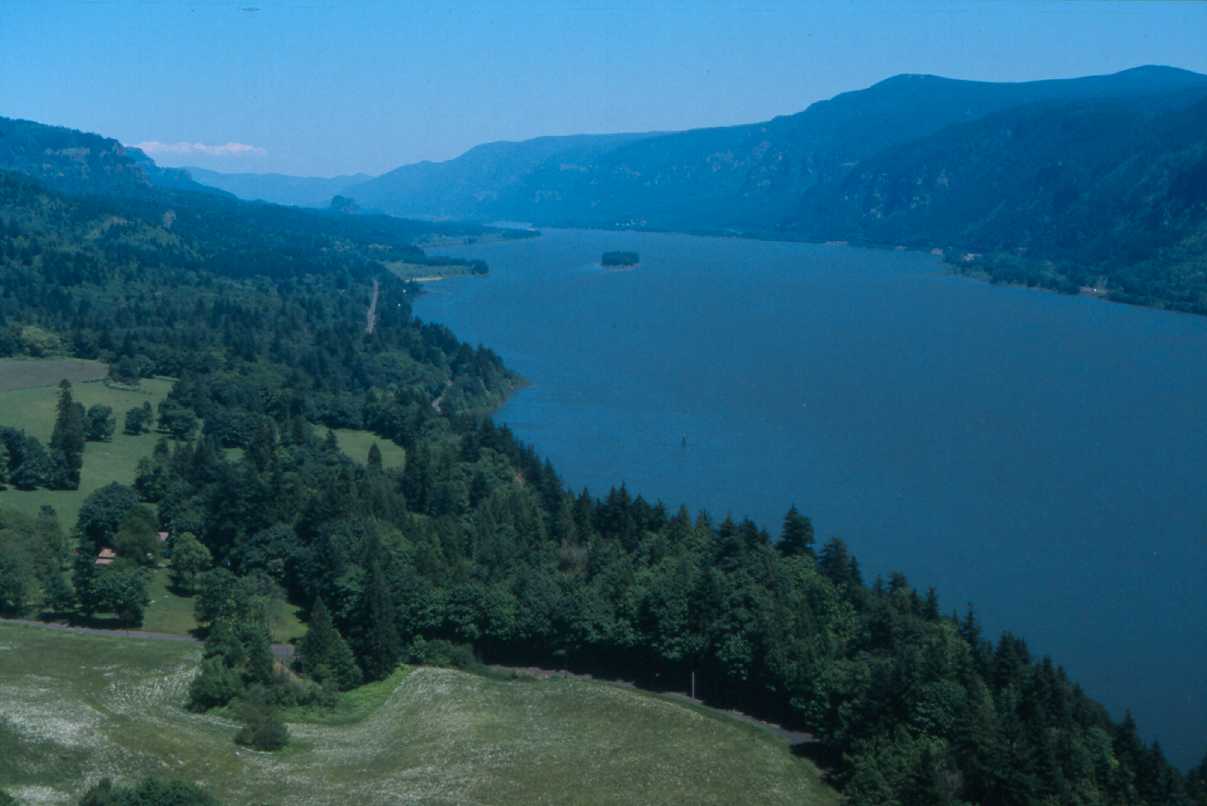
"The Gorge" is the first of seven"reaches" along the Lower Columbia
River Water Trail.
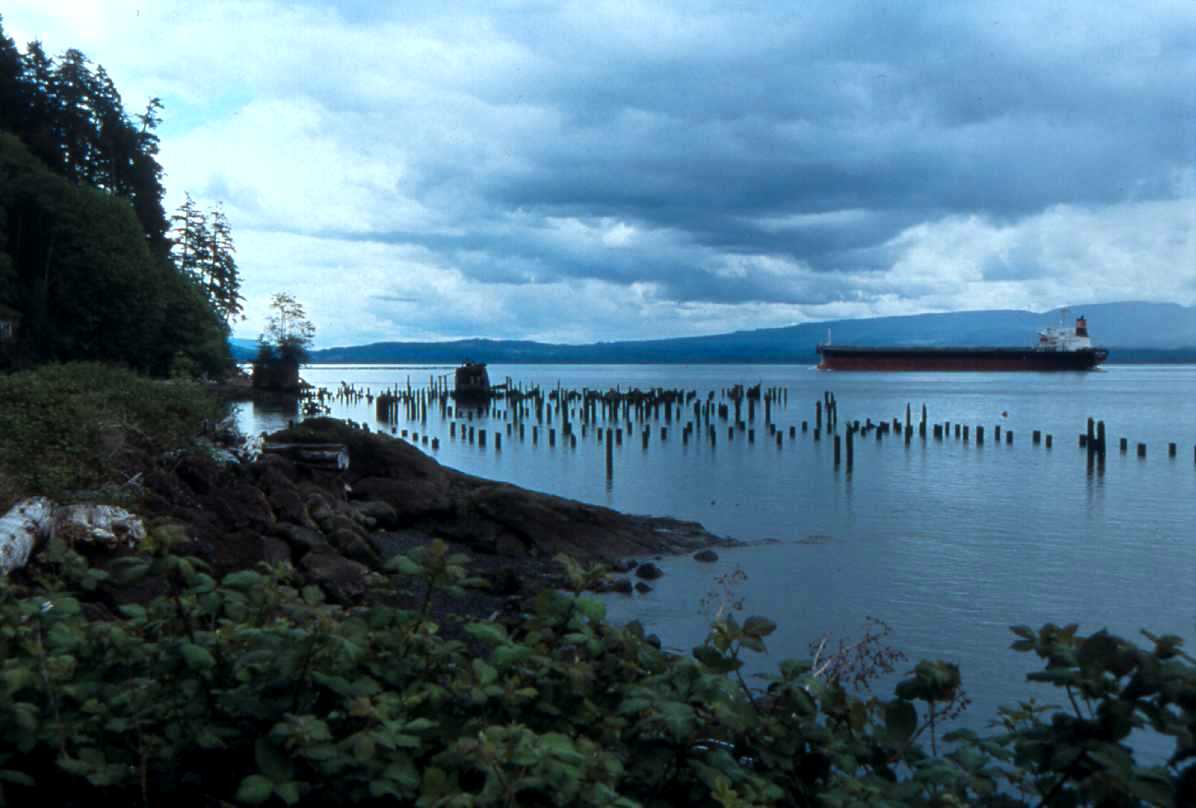
"The Mouth" is the last of seven "reaches" along the Lower Columbia River Water Trail.